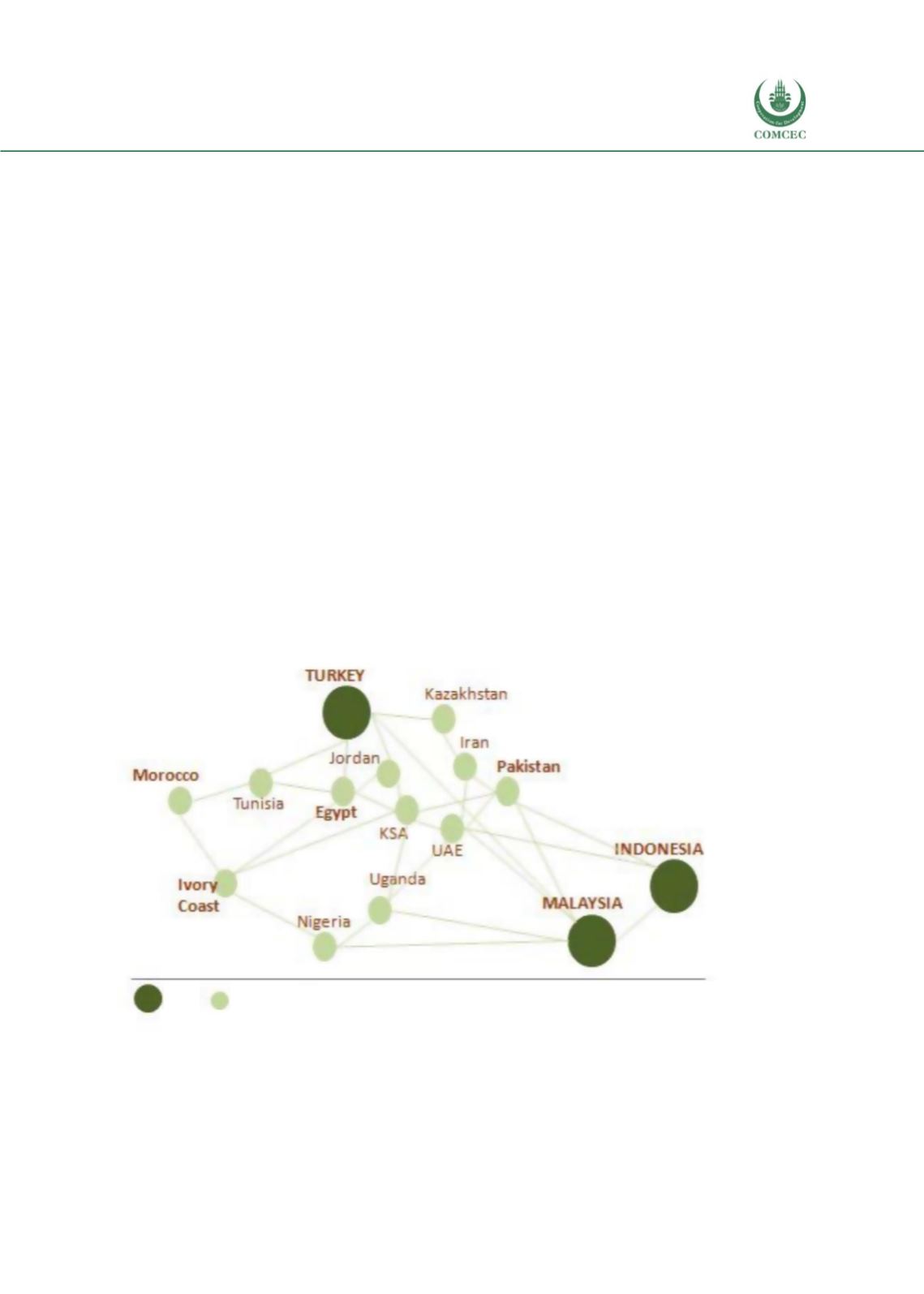

Increasing the Resilience of the Food Systems
In Islamic States in Face of Future Food Crises
153
Partnerships can be created betweenMember Countries that may have different strengths, for
instance, a country with strong manufacturing capabilities, such as the UAE, purchasing raw
materials from a country with strong agricultural capabilities, such as Egypt.
Such partnerships can be created across different product segments of food and agriculture and
can bring together private companies as well as investment firms and sovereign wealth funds.
Given global technology and communication developments, complementary business
operations no longer need to be in close proximity to each other, such as Silicon Valley. Rather,
a complementary set of competencies within various regions combine to deliver a robust
Cluster. Global companies such as P&G, GE and most all of the innovative companies have
different operational setups across the world that come together to deliver world -class
solutions.
Within such clusters, a Hub is a particular location that has sufficient critical mass to support
driving development, while a Node is a location that can significantly support a Hub with
complementary processes.
Numerous clusters can be developed, such as the procurement of meat and vegetables from
Pakistan to process and produce meat-based products in Malaysia that meet rigorous Halal
standards, or the procurement of fruits from Morocco to produce branded fruit juice products
in Turkey. The Technology StrategyBoardwill play an important role in ideating potential links
and suggesting potential projects.
Figure 44: DinarStandard Industry Clusters Analysis
*Meaningful opportunities derived from sub-sector clusters
Source: DinarStandard OIC Clustering Model Analysis 2011
Node
Hub
















